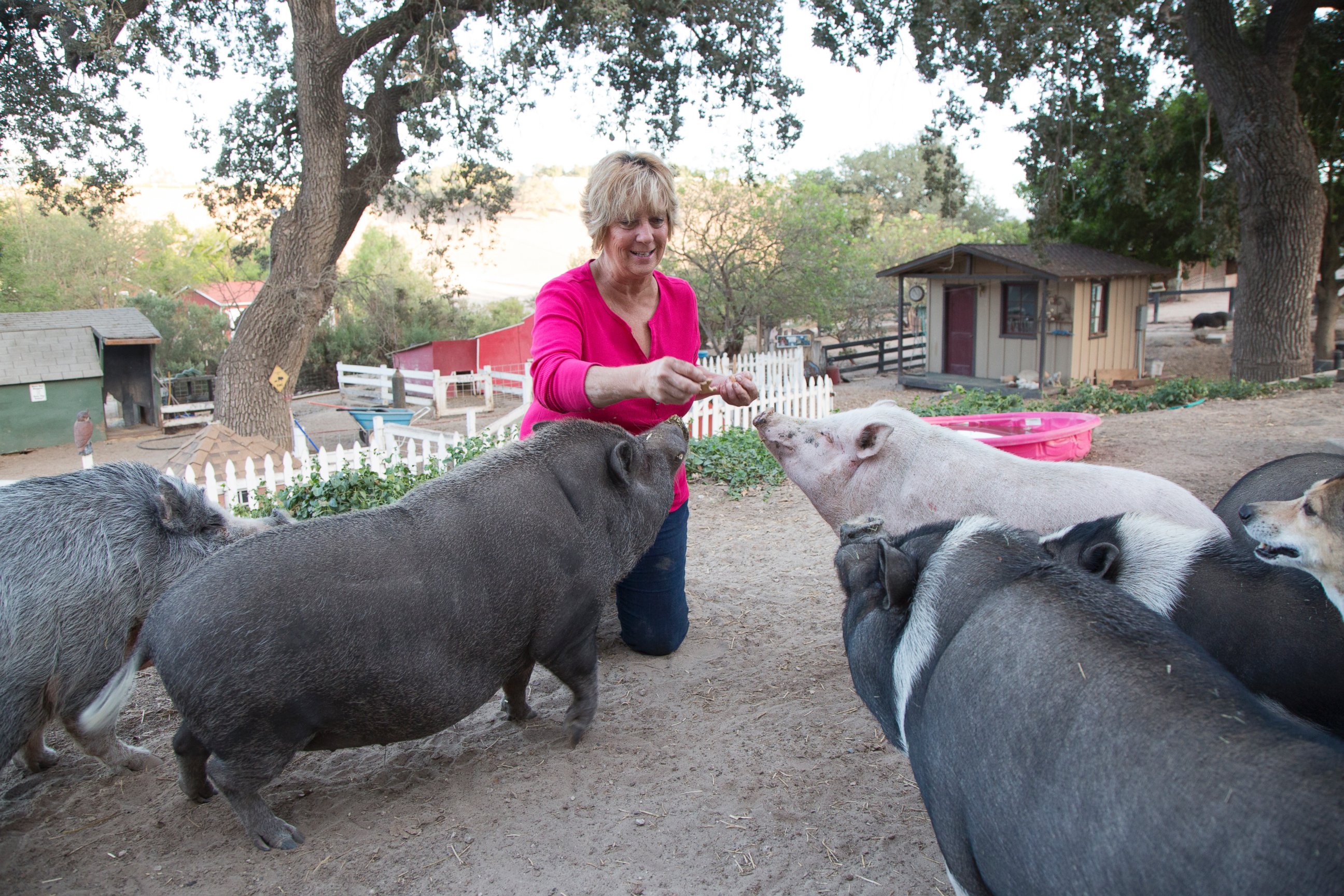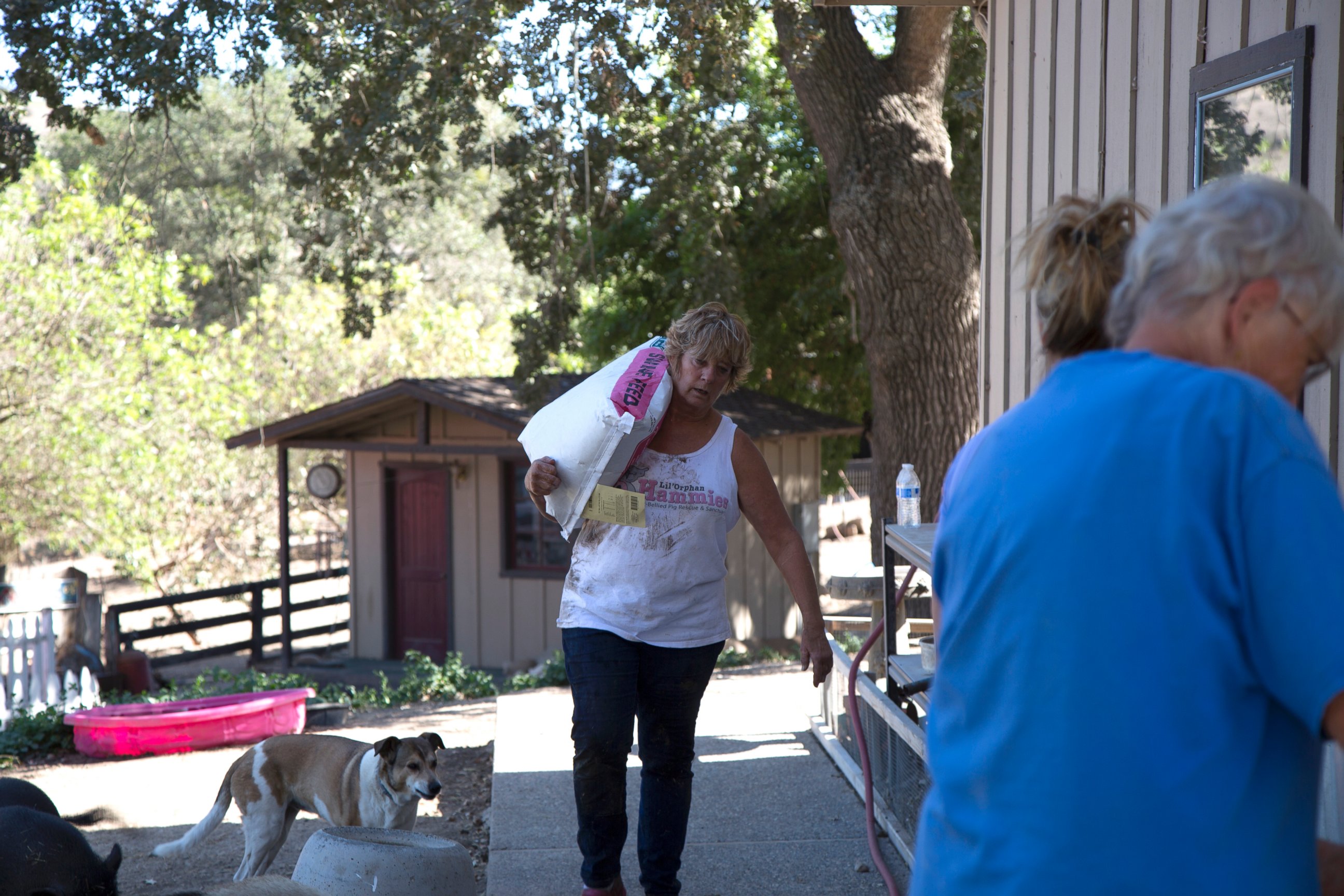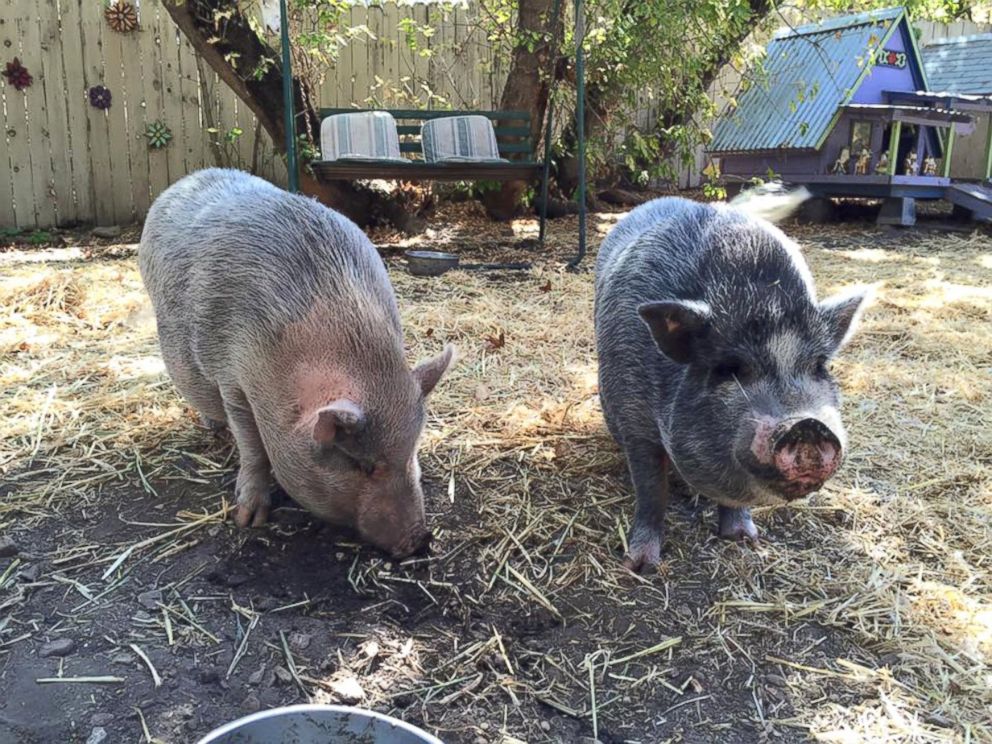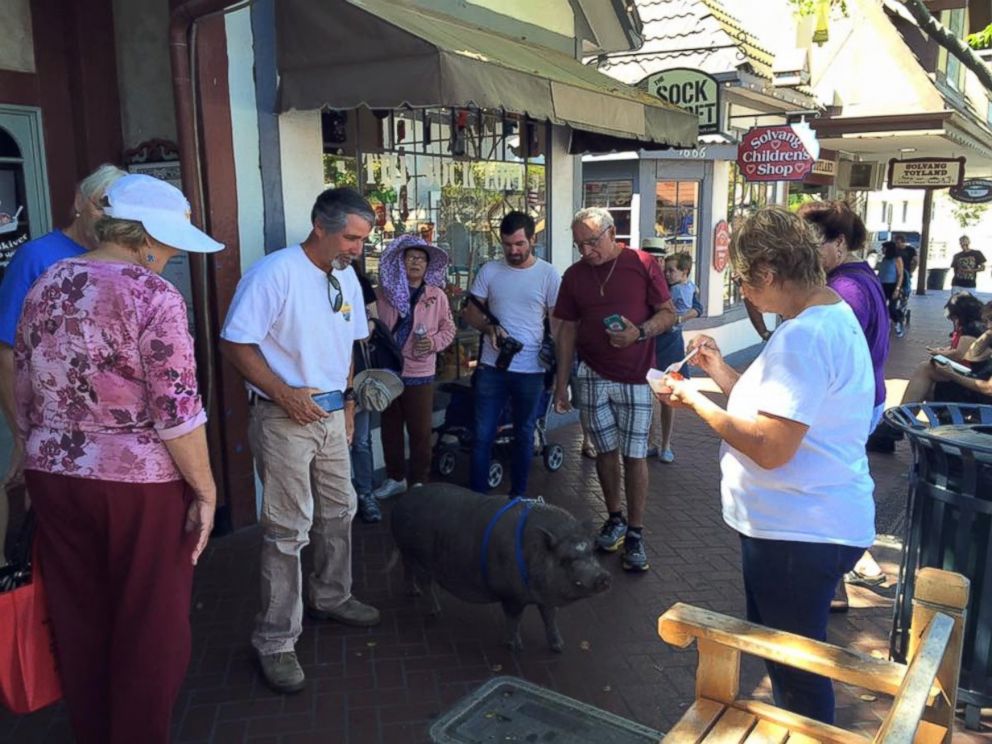Woman Provides Sanctuary for 'Orphaned' Potbelly Pigs
Susan Parkinson started Lil' Orphan Hammies sanctuary for unwanted potbelly .
— -- Susan Parkinson provides a safe haven for pigs.
The first time Parkinson saw a baby pig, she had to have one. “Back in the late 80's when these pigs first came out, it was something new and they were cute. I thought it was the neatest thing and I had to have one,” she said. Parkinson, 60, did and fell in love with her baby pig. “I took him everywhere,” she said.
Parkinson’s love for pigs led her to launch Lil’ Orphan Hammies, a sanctuary for unwanted, abused and abandoned potbelly pigs. She launched the sanctuary 24 years ago and has been dedicated to rescuing pigs since the first day. “I fell in love with my pig and I fell in love with what they were. Did I think I (would) be rescuing (pigs) 24 years later? No. I had no idea,” she said.

Every time a new pig was rescued she would put it in a new pen. Over time, her pen has been built into a 5 acre sanctuary in Solvang, Calif. Right now, there are 70 pigs and every pig is up for adoption except for those that are sponsored. “My passion was to take in older animals that nobody wanted. Nobody goes to a shelter and adopts a 10-year-old pig,” she said.

Her mission these days is to show people how these “pot belly” and “micro mini” pigs don’t stay this size for long. According to the USDA Animal and Plant Health Inspection Service, “teacup or micro mini pot-bellied pigs or Portuguese pigs are biologically the same as farm pigs and are therefore considered agricultural animals. They are biologically the same as those found on farms.”
These pigs are babies that eventually grow up to be full size pigs. “(Breeders) are making (pigs) smaller by starving them and the education is not there. These breeders lie to people to buy a product. It is a product to them not an animal. These are living creatures that are going to live at least 15 years and they don’t care,” she said.

Parkinson regularly walks downtown Solvang with Hamlet, her two-year-old pig to educate people about the responsibilities of owning a pig and to show people how big they can get. "I want people to see and see what people think ... The response in most people these days is ... I want one of those little pigs. I want (one) of those tea cups. Oh you want a baby pig? Well, it will grow to this size," she said.

That’s the driving force that keeps Parkinson going. She wants people to understand that pigs are not the average pet. "The biggest misconception about a pig is the size and that they are a wonderful pet and that they can live happily in your house. They use a litter box and you can walk them. It's not true," she said.

While she puts in long hours in the sanctuary and can hardly ever take a break, she also has a full-time job as a night auditor, so she can care for the pigs during the day. “Every day is a holiday if you love what you do. I love what I do. Would I like a day away? Yes,” she said.
Parkinson says she still gets about 20 calls a day from people not wanting their pigs, her dream is to one day not have to rescue pigs. "I would love that, (if) I wasn't a rescuer," she said. However,"this is where I call home. (This) is their place to call home and it will be their place as long as rescue is needed," she said.




